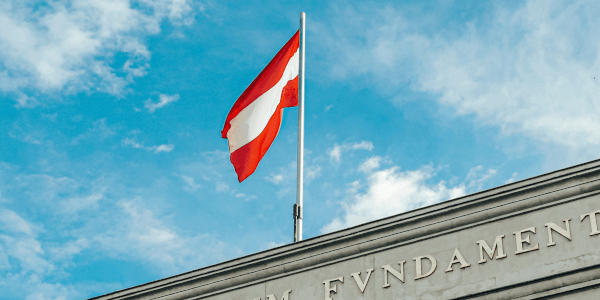How To Get Clients as a Freelance Copywriter
Discover how to get clients as a freelance copywriter in the UK and start saving on unnecessary conversion fees with Wise Business.

The ability to price your services confidently often separates a struggling freelance digital marketer from a successful one. But how do you set the right rate in the face of varying project scopes and client budgets?
We’ve answered this crucial question by looking at all of the main factors that affect pricing strategy for freelance digital marketers. We’ve also detailed how Wise Business has the potential to revolutionise how you manage your money as a freelance digital marketer by giving you a multitude of options, such as the ability to get paid in 40+ currencies.
Hourly rate pricing is simply charging clients based on how many hours (or days) you work on a task or project. It’s ideal for pricing your work when the project’s scope is undefined and the details are likely to change.
This pricing model is very popular and easy to calculate since you are billing for the hours worked. As a freelancer, before you charge per hour, you need to define your hourly rate, as it gives clarity to the client.
**Example scenario for charging by the hour:**You’re managing a fashion brand’s Instagram account, and your role goes beyond simply posting. It’s an ongoing process that involves creating content, publishing it consistently, engaging with customers, and tracking the performance of your content.Since there are no clear-cut deliverables, charging by the hour makes more sense.
Per-project pricing, on the other hand, involves charging a fixed price for a project. This pricing mode is ideal for projects with a clearly defined scope and deliverables.
When pricing per project, you can prioritise your interests and ask for a milestone payment or an upfront deposit before you begin.
Afterward, you can request the balance on the successful completion of the task.
This is something that might not be possible when charging per hour, as it can be tricky to determine the exact amount of time a project will take.
This pricing model hinges on a mutually agreed outcome. It also gives the client clarity on the budget for the project while rewarding the freelancer’s efficiency.
Meaning, if you complete your tasks faster, you earn more per hour and can have more time to take on new tasks.
Example scenario for charging per-project: You’re hired for a three-month search engine optimisation (SEO) audit on two websites for £3,000.In this case, it’s worth charging for the project in one go because you have the option of completing the work as early as you want.Irrespective of whether you finish the work by the deadline or before it, you will still receive the full amount - but finishing early will free up time for you to take on another project.
| Pricing Model | Best For | Pros ✅ | Cons ❌ |
|---|---|---|---|
| Hourly Rate | Ongoing retainers, projects with an unclear or evolving scope, or tasks where the required time is difficult to predict. | It ensures you are paid for all the time you work and accommodates changes to the project scope. It also protects you from underestimating a project's required time. | It punishes efficiency, because you earn less for completing a task faster. Also, it can lead to disagreements over the number of hours billed, and some clients may hesitate without a fixed total cost. |
| Project-Based Rate | Well-defined projects with clear deliverables and a fixed scope, like a specific campaign setup or a content package. | It ensures the client knows the total cost upfront and rewards efficiency, since your effective hourly rate increases when you work faster. It is also a value-focused pricing system, as the price is based on the outcome of the work, not just the number of hours worked. | There’s a risk of clients requesting extra work during the process (known as ‘scope creep’). Moreover, you can lose money if you misjudge the project's complexity, and it can become difficult to charge for additional time if the scope expands. |
The average going rate for digital marketers in the UK largely depends on the specialty/niche of the freelancer1:
| Job title | Average rate |
|---|---|
| Marketing Assistant | £24.8k |
| Digital Marketing Executive | £28.7k |
| SEO Specialist | £33–34k |
| SEO Manager | £40–48k |
| PPC / Paid Search Manager | £38–45k |
| Paid Social Manager | £39k |
| Content Manager | £41–47k |
| Social Media Manager | £33–37k |
| Email Marketing Manager | £33–55k |
| Marketing Automation Manager | £45–52k |
| CRM Manager | £46–49k |
| Marketing Operations Manager | £49–53k |
| Digital Marketing Manager | £40–48k |
| Performance Marketing Manager | £51k |
| Digital / Marketing Analyst | £41k |
| CRO Specialist | £42–55k |
| Head of Marketing | £105k |
| Head of Digital | £100-130k |
| Chief Marketing Officer | £110–122k |
Based on reports, digital marketers in the UK often earn salaries above the national average.
For context, the median gross annual earnings for full-time employees were reported to be about £37,430 in 20242. According to Glassdoor, the average base pay for a digital marketing manager in London is £48,0003.
1. Establish your income goal: Start by knowing your financial goals and breaking them into smaller chunks, i.e, monthly, weekly, daily, etc. This is important because it helps you understand the baseline amount you must earn for personal income since you have to factor in taxes, maintenance, and miscellaneous expenses.
2. Research the market rate: Once you establish your income goal, you need to compare it with the market average for your niche. When doing your research, you can refer to industry reports, salary guides, or freelance platforms to confirm the prices. This will help you have a better understanding of the market so you don’t underprice or overprice your services.
3. Pick your pricing model: Pick a pricing model that suits the nature of your work and your client’s preferences. You can price per hour or per project. Regardless of which model you pick, make sure you have a contract that clearly outlines your deliverables, timelines, payment terms, and revision limits.
4. Calculate your rate: Use the below steps to calculate your rate depending on how you charge.
For an hourly rate:
Step 1: Calculate your monthly business and personal expenses. Business expenses include taxes, equipment, courses, etc. (assume it is £1,000). Personal expenses include food, rent, insurance, etc. (assume it is £1,500). In this case, based on the assumed values, your total expenses are £2,500.Step 2: Figure out how many hours you can work using the process below.- Estimate your weekly billable hours, e.g. 35 hours.
- Consider time off like holidays or weekends, say four weeks.
- Subtract the total annual weeks from your time off, i.e., 52 weeks (in a year)
- 4 weeks (of vacation) = 48 work weeks (in a year).
- Multiply your preferred working hours by your billable hours, i.e., 35 hours a week x 48 work weeks = 1680 hours a year.
- Divide your yearly billable hours into months, i.e., 1680 hours a year ÷ 12 months a year = 140 hours a month.Step 3: Calculate your minimum hourly rate by dividing your total monthly expenses by the number of hours you’re going to work, i.e., £2,500 ÷ 140 = £17.80/hour.
For a per-project rate:
Step 1: Estimate the project hours. For instance, a social media management campaign may take 40 hours to complete.Step 2: Apply your target hourly rate to the project hours. For example, using a target rate of £40/hour (based on market research and your experience), you would multiply this by the estimated hours for the project. £40/hour x 40 hours = £1,600.Step 3: Add a buffer for possible edits to the tune of 10-20% of the total project cost. For a 20% buffer, £1,600 x 0.2 = £320.Step 4: Calculate the final project rate by adding the previous rate to the buffer. In this case, the project rate is £1,600 + £320 = £1,820.
Note: As you gain more experience in your craft, consider increasing your rates. Some factors include increased demand, successful projects, an increase in the price of paid tools, and new certifications, among others.
That said, ensure you adjust your rates accordingly based on your experience, market value, and financial objectives.
Get started with Wise Business 🚀
Your final rate card should contain the following:
- A list of your core services: This includes all the niches your service covers, such as SEO, paid ads, email marketing, etc.
- Your chosen pricing model: A clear indication of whether you charge per hour, per project, a mix of both of these, or in another way.
- Your hourly rate (if applicable) and what that rate covers.
- Your per-project rate (if applicable): Fixed prices for services with a clear start and end. This gives clients cost certainty.
- Monthly retainers(if applicable): This normally applies for ongoing work like social media management or SEO. This is ideal for establishing a stable income.
- Service Packages: Bundled services offered at a set price, which can be very appealing to new clients.
- Your payment terms: For instance, whether you will take 50% upfront to book the project, then 50% upon final delivery. For retainers, specify the billing date.
- Extra information: This includes your accepted methods of payment (such as a Wise Business invoice) and any late payment policy you’ve set (such as a percentage fee charged on the total amount for late payments).
Getting your pricing right is a huge win. But what about getting paid, especially by international clients?
If you don’t want to end up chasing invoices and wrestling with poor exchange rates that can sour the freelance dream, sign up for Wise Business.
Wise Business is trusted by countless freelancers for their money management needs. You can send money globally and receive payments from clients worldwide without hidden fees, using local bank details in 40+ currencies.
Register for Wise Business today ✍️
A fair freelance digital marketing hourly rate depends on experience, specialisation, and project scope. According to Upwork, a fair freelance digital marketing hourly rate costs USD 15 to USD 454.
A freelance digital marketing rate calculator is a tool, usually an application or online spreadsheet, that enables freelance digital marketers to calculate the going hourly or project rate for their services⁵.
You can charge hourly when tasks are open-ended, and charge per project when tasks have defined deliverables.
Firstly, as a freelancer, you must register as self-employed with HM Revenue and Customs (HMRC) for proper documentation. Additionally, digital marketing freelancers pay income tax, National Insurance Contributions (NICs), and in some cases value-added tax (VAT)6.
Sources:Sources last checked on September 22nd, 2025
*Please see terms of use and product availability for your region or visit Wise fees and pricing for the most up to date pricing and fee information.
This publication is provided for general information purposes and does not constitute legal, tax or other professional advice from Wise Payments Limited or its subsidiaries and its affiliates, and it is not intended as a substitute for obtaining advice from a financial advisor or any other professional.
We make no representations, warranties or guarantees, whether expressed or implied, that the content in the publication is accurate, complete or up to date.

Discover how to get clients as a freelance copywriter in the UK and start saving on unnecessary conversion fees with Wise Business.

Learn how to get clients as a freelance photographer in the UK and find out how Wise Business can help you get paid fast, at home and abroad.

Discover how to apply for a permit to work self-employed in Austria as a UK citizen. Our guide explains the application process, key things to note, and more.

Thinking of moving to Finland to freelance? Our 2025 guide for UK citizens explains how to apply for the Finnish residence permit for an entrepreneur.

Discover the process of paying tax as a self-employed individual or freelancer in the UK. Our guide explains all of the necessary steps in detail.

Learn how to get clients as a freelance bookkeeper in the UK in 2025 with our step-by-step guide.